Abstract
Normocephalic children found to have ventriculomegaly during evaluation of long-standing (4.5-8.5 years) neurological disorder were tested for academic achievement, intellectual quotient and neuropsychological functioning. Radioactive iodinated serum cisternography, pre and post-shunt electrophysiological studies (visual evoked responses, brainstem auditory evoked potentials, sleep electroencephalograms) and radiological studies (skull radiographs computed tomography) were recorded. Four children who have been followed more than one year after insertion of ventricular-peritoneal shunts are presented. All demonstrated improvement in psychometric findings along with some improvement in CT scan and EEG studies. The most marked initial changes were noted on measures of neuropsychological performance, accompanied later by improvement in measures of intelligence. Achievement test scores showed no consistent pattern of change. This sample suggests that there is a group of asymptomatic children with apparent clinically stable (arrested) hydrocephalus in whom abnormal neuropsychological testing indicates the need for cerebrospinal fluid shunting, with subsequent improvement.
Full text
PDF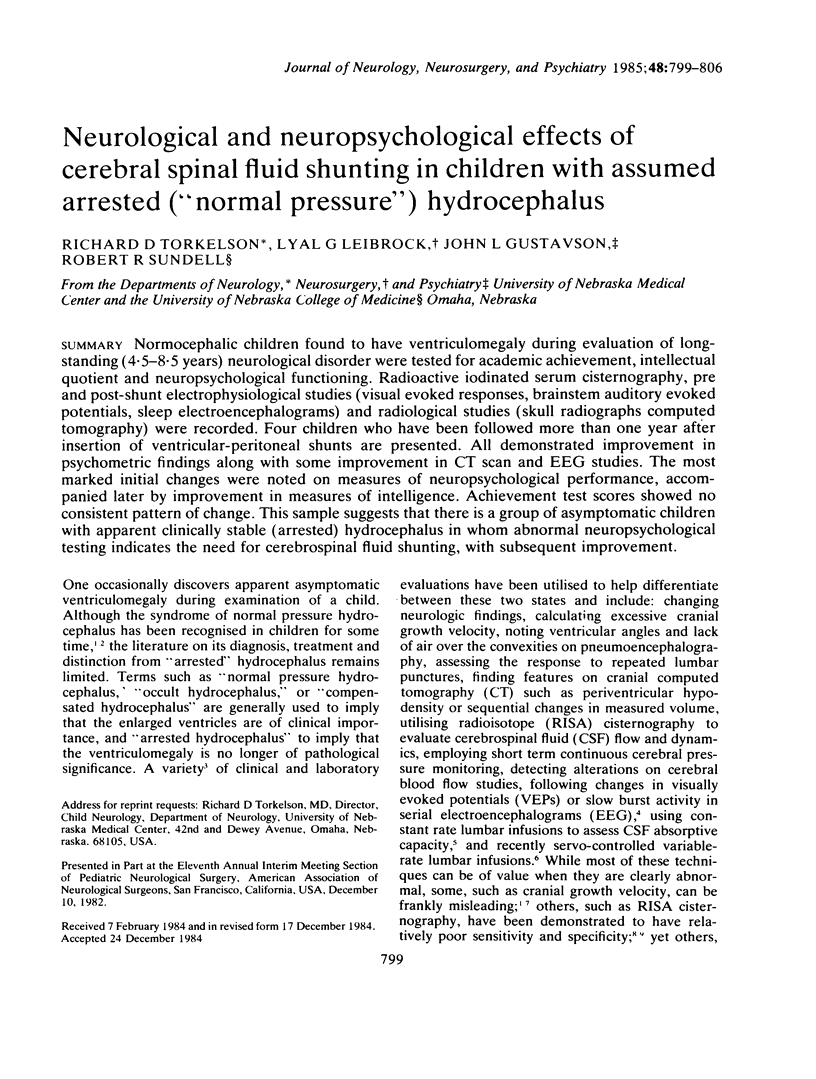
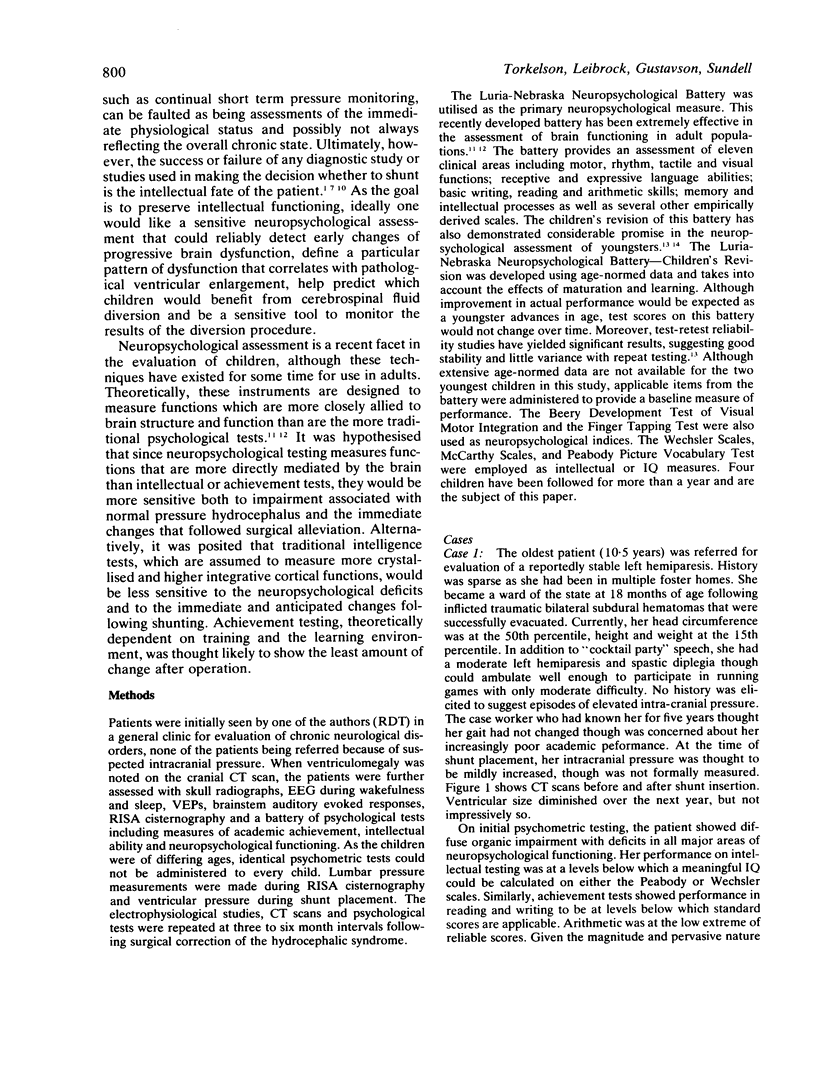

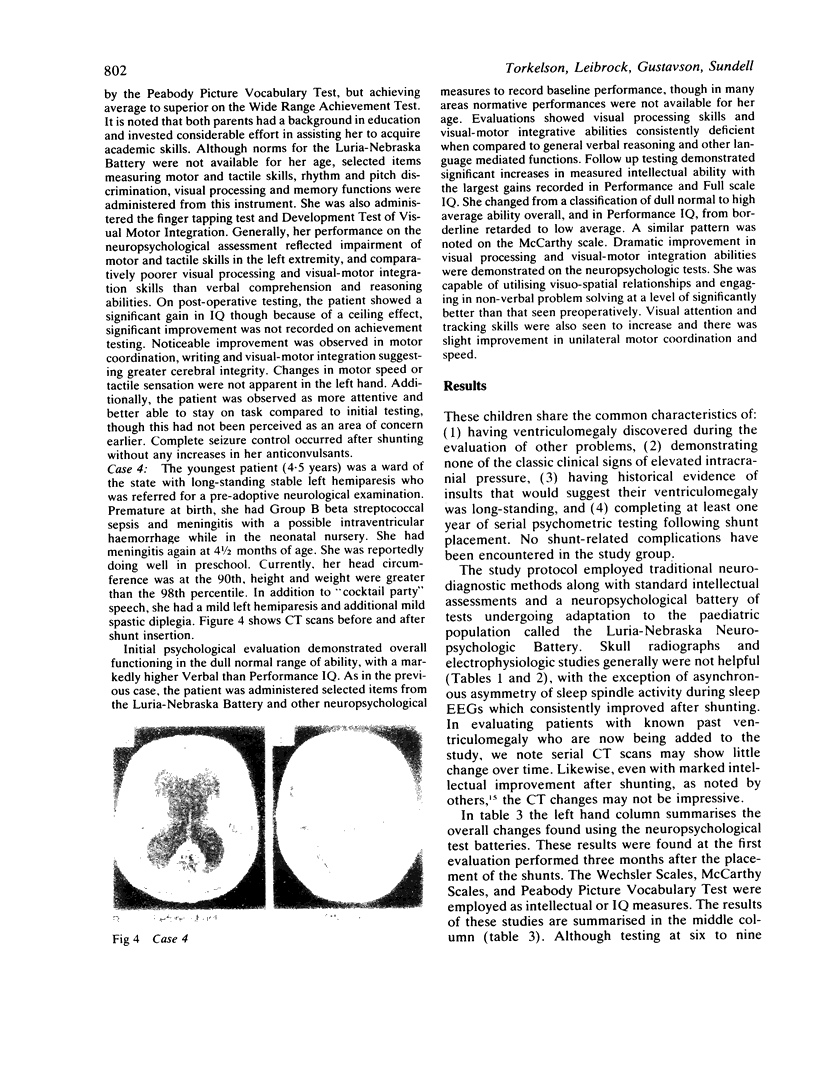
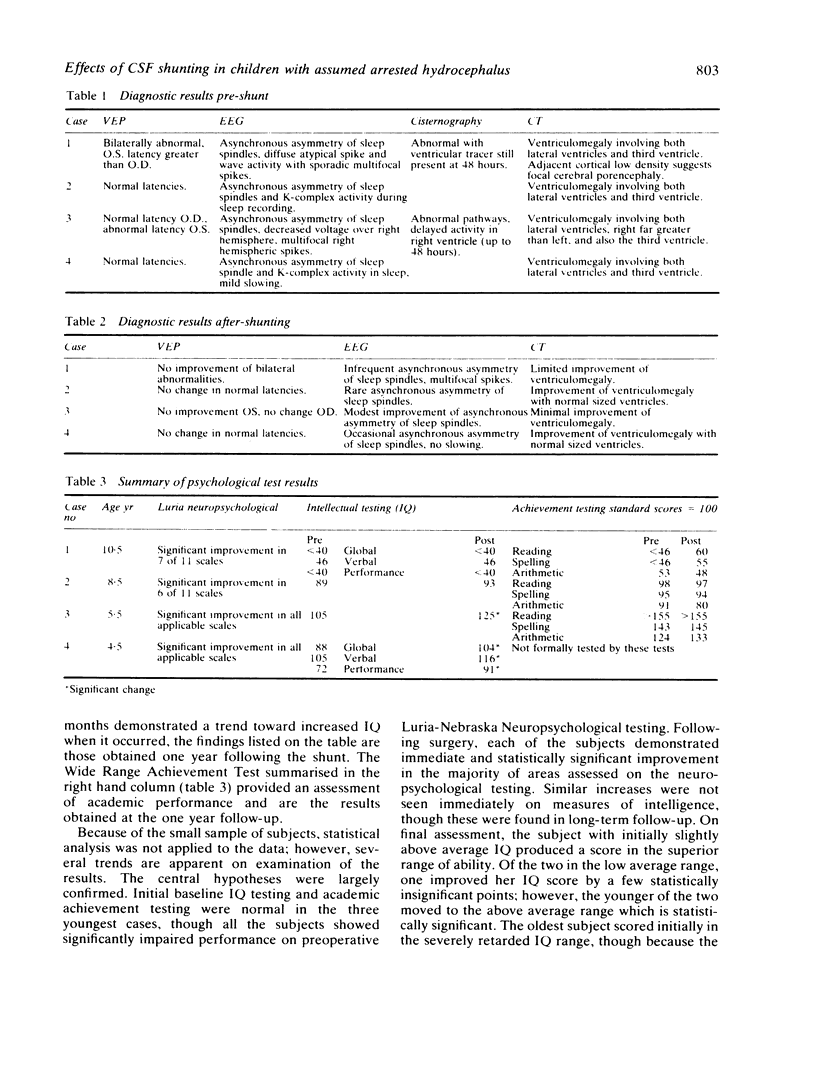
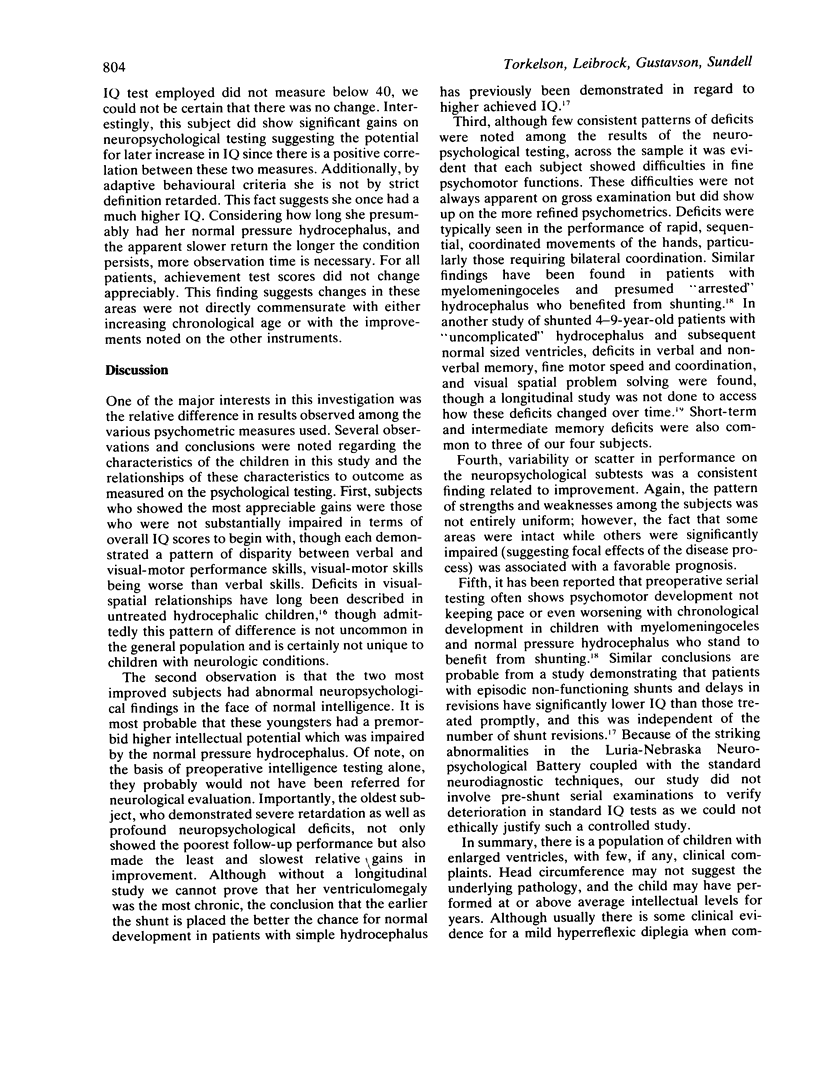

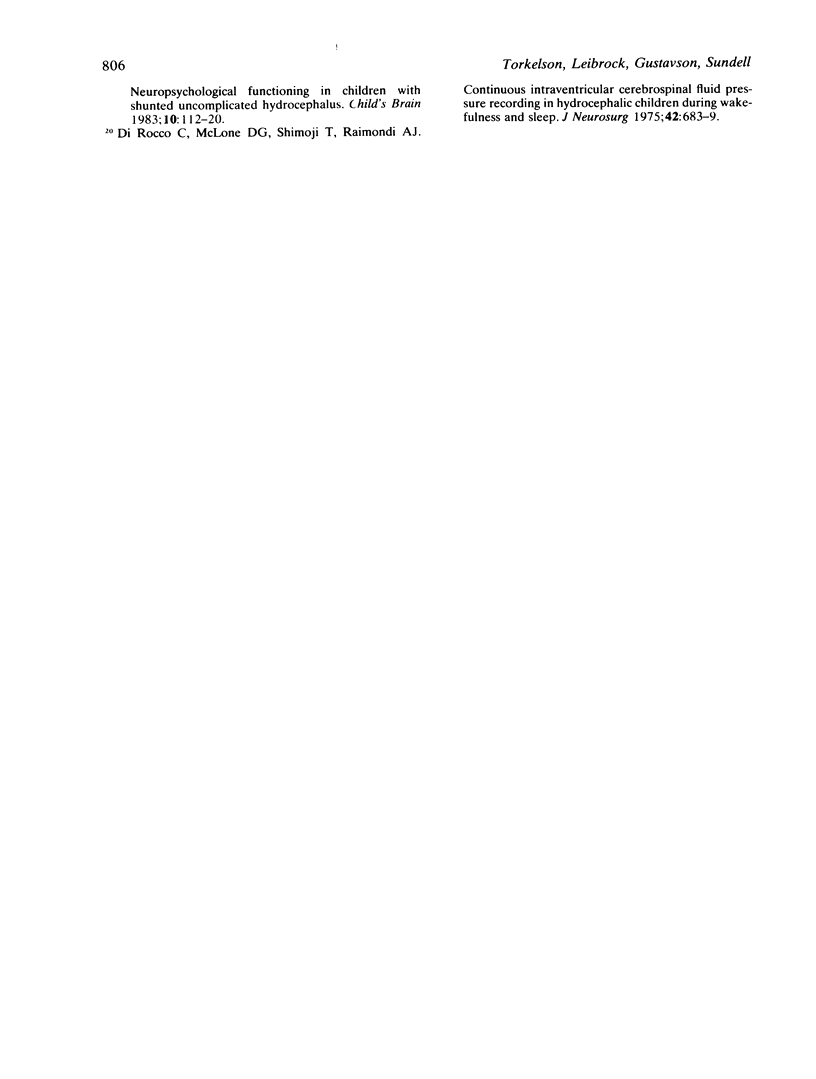
Images in this article
Selected References
These references are in PubMed. This may not be the complete list of references from this article.
- Belloni G., di Rocco C., Focacci C., Galli G., Maira G., Rossi G. F. Surgical indications in normotensive hydrocephalus. A retrospective analysis of the relations of some diagnostic findings to the results of surgical treatment. Acta Neurochir (Wien) 1976;33(1-2):1–21. doi: 10.1007/BF01405737. [DOI] [PubMed] [Google Scholar]
- Black P. M. Idiopathic normal-pressure hydrocephalus. Results of shunting in 62 patients. J Neurosurg. 1980 Mar;52(3):371–377. doi: 10.3171/jns.1980.52.3.0371. [DOI] [PubMed] [Google Scholar]
- Di Rocco C., Caldarelli M., Maira G., Rossi G. F. The study of cerebrospinal fluid dynamics in apparently 'arrested' hydrocephalus in children. Childs Brain. 1977;3(6):359–374. doi: 10.1159/000119687. [DOI] [PubMed] [Google Scholar]
- Gordon N. Normal pressure hydrocephalus and arrested hydrocephalus. Dev Med Child Neurol. 1977 Aug;19(4):540–543. doi: 10.1111/j.1469-8749.1977.tb07953.x. [DOI] [PubMed] [Google Scholar]
- Hammock M. K., Milhorat T. H., Baron I. S. Normal pressure hydrocephalus in patients with myelomeningocele. Dev Med Child Neurol Suppl. 1976;(37):55–68. doi: 10.1111/j.1469-8749.1976.tb04281.x. [DOI] [PubMed] [Google Scholar]
- Hashi K., Nishimura S., Kondo A., Nin K., Jae-Hong S. The EEG in normal pressure hydrocephalus. Acta Neurochir (Wien) 1976;33(1-2):23–35. doi: 10.1007/BF01405738. [DOI] [PubMed] [Google Scholar]
- Jacobs L., Kinkel W. Computerized axial transverse tomography in normal pressure hydrocephalus. Neurology. 1976 Jun;26(6 Pt 1):501–507. doi: 10.1212/wnl.26.6.501. [DOI] [PubMed] [Google Scholar]
- Raimondi A. J., Soare P. Intellectual development in shunted hydrocephalic children. Am J Dis Child. 1974 May;127(5):664–671. doi: 10.1001/archpedi.1974.02110240050005. [DOI] [PubMed] [Google Scholar]
- SCHICK R. W., MATSON D. D. What is arrested hydrocephalus? J Pediatr. 1961 Jun;58:791–799. doi: 10.1016/s0022-3476(61)80133-9. [DOI] [PubMed] [Google Scholar]
- Schutz H., Fleming J. F., Humphreys R. P., Deck J. H., Keith W. S. Normal pressure hydrocephalus--high pressure normocephalus. Can J Neurol Sci. 1980 Aug;7(3):211–219. doi: 10.1017/s0317167100023222. [DOI] [PubMed] [Google Scholar]
- Sklar F. H., Beyer C. W., Jr, Ramanathan M., Clark W. K. Servo-controlled lumbar infusions in children. A quantitative approach to the problem of arrested hydrocephalus. J Neurosurg. 1980 Jan;52(1):87–98. doi: 10.3171/jns.1980.52.1.0087. [DOI] [PubMed] [Google Scholar]






